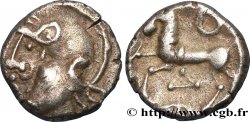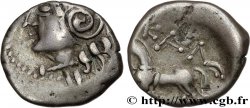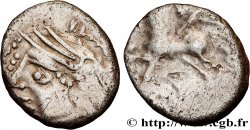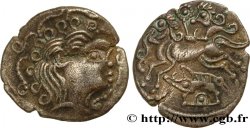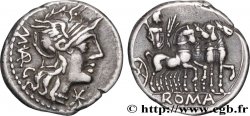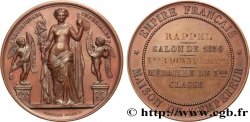Live auction - bga_501891 - GALLIA BELGICA LINGONES (Regione di Langres) Coin monétaire de denier KALETEDOY
Devi Sign-in ed essere un offerente approvato fare un'offerta, Login per fare offerte. Conti sono soggetti ad approvazione e di approvazione sono raggiunti entro 48 ore. Non aspettare fino al giorno di una vendita si chiude per registrarti.Confermando la tua offerta su questo oggetto ti impegni ad un contratto legalmente vincolante per l'acquisto di questo prodotto e fare clic su «offerta» costituisce accettazione dei termini di utilizzo de live auctions cgb.fr.
Offerta deve essere collocato in euro gli importi interi vendita only.The si chiuderà al momento sulla descrizione dell'oggetto, eventuali offerte pervenute al sito dopo l'orario di chiusura non verranno eseguite. Volte transmition possono variare e le offerte potrebbero essere respinto se si attende per gli ultimi secondi. Per ulteriori informazioni ckeck le FAQ Live auction.
Le offerte vincenti saranno sottomesse ai 18% per spese di compartecipazione alla vendita.
Le offerte vincenti saranno sottomesse ai 18% per spese di compartecipazione alla vendita.
| Valutazione : | 7 000 € |
| Prezzo : | 3 500 € |
| Offerta maxima : | 4 250 € |
| Data di fine vendita : | 04 dicembre 2018 15:07:26 |
| partecipanti : | 1 partecipanto |
Tipo : Coin monétaire de denier KALETEDOY
Data: Ier siècle avant J.-C.
Nome della officina / città: Langres
Metallo : bronzo
Diametro : 21 mm
Peso : 47,42 g.
Grado di rarità : UNIQUE
Commenti sullo stato di conservazione:
Beau cylindre à l’empreinte nette. Patine foncée de collection ancienne
N° nelle opere di riferimento :
Diritto
Descrittivo diritto : Type en creux et inversé : Tête casquée à gauche.
Rovescio
Commento
Ce coin a été précisément étudié dans les Cahiers Numismatiques n°201 de septembre 2014, par L.-P. Delestrée, pages 27 à 31, “Un coin monétaire gaulois du centre-est dans la basse vallée de la Seine”, d’où nous tirons la plupart des informations.
Ce coin aurait été découvert anciennement sur la rive nord de la Seine, en aval des Andelys dans l’Eure, sur le plateau du Val Saint-Martin.
Sa hauteur totale est de 2,2cm. À son sommet, une excroissance cylindrique est destinée à faciliter la fixation.
Sa représentation est sans aucun doute le droit du denier des KALETEDOY, normalement frappés dans la région de Langres, ce qui pose un problème géographique !
On pense donc désormais à un “atelier de campagne” qui accompagnait les unités militaires lors de leurs déplacements.
This die was studied in detail in Cahiers Numismatiques n°201 of September 2014, by L.-P. Delestrée, pages 27 to 31, “A Gallic monetary die from the center-east in the lower Seine valley”, from which we draw most of the information. This die was apparently discovered in the past on the north bank of the Seine, downstream from Les Andelys in the Eure, on the Val Saint-Martin plateau. Its total height is 2.2 cm. At its summit, a cylindrical protrusion is intended to facilitate fixing. Its representation is undoubtedly the obverse of the denier of the KALETEDOY, normally struck in the Langres region, which poses a geographical problem! We are therefore now thinking of a “campaign mint” which accompanied military units during their movements.
Ce coin aurait été découvert anciennement sur la rive nord de la Seine, en aval des Andelys dans l’Eure, sur le plateau du Val Saint-Martin.
Sa hauteur totale est de 2,2cm. À son sommet, une excroissance cylindrique est destinée à faciliter la fixation.
Sa représentation est sans aucun doute le droit du denier des KALETEDOY, normalement frappés dans la région de Langres, ce qui pose un problème géographique !
On pense donc désormais à un “atelier de campagne” qui accompagnait les unités militaires lors de leurs déplacements.
This die was studied in detail in Cahiers Numismatiques n°201 of September 2014, by L.-P. Delestrée, pages 27 to 31, “A Gallic monetary die from the center-east in the lower Seine valley”, from which we draw most of the information. This die was apparently discovered in the past on the north bank of the Seine, downstream from Les Andelys in the Eure, on the Val Saint-Martin plateau. Its total height is 2.2 cm. At its summit, a cylindrical protrusion is intended to facilitate fixing. Its representation is undoubtedly the obverse of the denier of the KALETEDOY, normally struck in the Langres region, which poses a geographical problem! We are therefore now thinking of a “campaign mint” which accompanied military units during their movements.








 Segnalare un errore
Segnalare un errore Stampate la pagina
Stampate la pagina Condividi mia selezione
Condividi mia selezione Fai una domanda
Fai una domanda Consegnare / vendere
Consegnare / vendere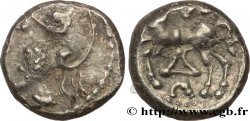
 Descrittivo
Descrittivo